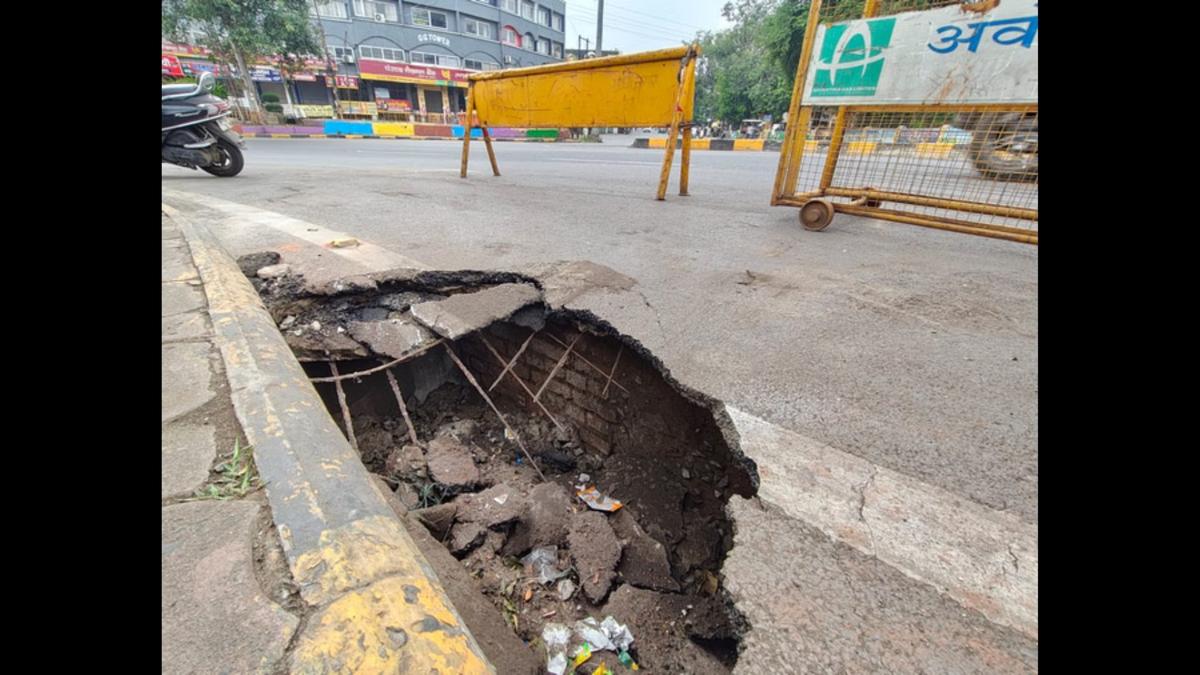ARTICLE AD BOX
 Posing questions about states’ finances, she asked if there is no way to rationalise committed expenditure of states, especially if they are beyond affordable limits
Posing questions about states’ finances, she asked if there is no way to rationalise committed expenditure of states, especially if they are beyond affordable limits
Stating that there is a thin line between investing money in productive assets and giving freebies, Finance Minister Nirmala Sitharaman on Tuesday said many states are “in difficulty” as such giveaways are piling up. Posing questions about states’ finances, she asked if there is no way to rationalise committed expenditure of states, especially if they are beyond affordable limits.
“Many states are in difficulty because these are piling up. I am not naming anybody, any state. But there are states which have, and I am afraid to say this, 70 per cent of their revenues going for committed expenditure. When I say committed, it’s salaries, pensions, they have to give it. I am not saying don’t give. But 70 per cent? With 30 per cent, what else will you do? Especially in a growth phase when so much has to be done for keeping the buoyancy of the economy. And what for is this 70 per cent? Do you need that many people? Is there no way in which we can rationalise? Will companies run like that? Yes, we need doctors, we need educationalists, we need education to grow, we need paramedics. But beyond a certain limit, which you can’t afford…,” Sitharaman said in response to a student’s question about the need to strike a balance between the “much-needed productive investment” and the “ever-growing number of populist schemes like freebies”.
Sitharaman said there are issues, freebies are one of them, and committed expenditure is another. Making a reference to the discussion by state finance ministers in the Goods and Services Tax (GST) Council, Sitharaman said the Council’s members, who are finance ministers of states and different political backgrounds, keep revenue consideration on the top of their mind. “…(they) are very concerned when we reduce something (tax rate) here, reduce something there. (They say) no, no, what will happen to revenue, please think about it, let’s study this. A very responsible position for finance ministers, you’re here to generate revenue. But at the same time, not to harass people, not to burden people, not to put too much of tax. You have to have systems’ efficiency. You have to ensure there are no loopholes,” she said. But, a finance minister’s job is to generate revenue and the answer at the time of allocating funds for schemes at the time of states’ budget or national budget can’t be about having given away revenue, she said.
It is then borrowing is resorted to, when revenue doesn’t increase much and the levels of committed expenditure and freebies are high, the Finance Minister said. Though the government will be able to meet the fiscal deficit number for this financial year, Sitharaman said, from next year onwards, the government’s focus will be on debt-to-GDP (ratio) and both states and the Centre will have to abide by it. “Once your committed expenditure is so much, or once your freebies are so much and once you’re not able to increase your revenue, you tend to borrow. But you have a ceiling on you as to how much you can borrow whether it is a country or whether it is a state. So I have it in my FRBM — Fiscal Responsibility and Budget Management — so do the states have it. It is important for us. And for achieving Viksit Bharat, we need to consciously be on the path of reforming and bringing in prudential fiscal management. That’s the responsibility of every finance minister,” she said.
The Centre has set a fiscal deficit target of 4.4 per cent of the GDP for the financial year 2025-26. After the Covid-19 pandemic, global debt levels of major emerging economies have worsened. The government has been working towards reducing its debt-to-GDP ratio, which refers to the share of a country’s national debt to its gross domestic product. In 2017, the NK Singh Committee had recommended a ceiling for general government debt of 60 per cent — 40 per cent for the Centre and 20 per cent for states. The general government debt level in India is currently over 80 per cent with the Centre’s share at about 57 per cent. In February, marking a significant shift from having fiscal deficit as the only operational target for fiscal consolidation, the government had outlined its intent to move to the debt-to-GDP ratio as the fiscal anchor from FY27 onwards. It has targeted a declining debt-GDP ratio to 50±1 per cent by March 31, 2031.
Aanchal Magazine is Senior Assistant Editor with The Indian Express and reports on the macro economy and fiscal policy, with a special focus on economic science, labour trends, taxation and revenue metrics. With over 13 years of newsroom experience, she has also reported in detail on macroeconomic data such as trends and policy actions related to inflation, GDP growth and fiscal arithmetic. Interested in the history of her homeland, Kashmir, she likes to read about its culture and tradition in her spare time, along with trying to map the journeys of displacement from there. ... Read More
Stay updated with the latest - Click here to follow us on Instagram
© The Indian Express Pvt Ltd










 English (US) ·
English (US) ·